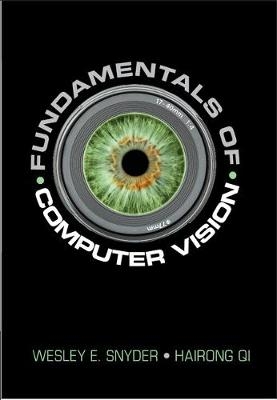
Fundamentals of Computer Vision
Cambridge University Press (Verlag)
978-1-107-18488-6 (ISBN)
Computer vision has widespread and growing application including robotics, autonomous vehicles, medical imaging and diagnosis, surveillance, video analysis, and even tracking for sports analysis. This book equips the reader with crucial mathematical and algorithmic tools to develop a thorough understanding of the underlying components of any complete computer vision system and to design such systems. These components include identifying local features such as corners or edges in the presence of noise, edge preserving smoothing, connected component labeling, stereopsis, thresholding, clustering, segmentation, and describing and matching both shapes and scenes. The extensive examples include photographs of faces, cartoons, animal footprints, and angiograms, and each chapter concludes with homework exercises and suggested projects. Intended for advanced undergraduate and beginning graduate students, the text will also be of use to practitioners and researchers in a range of applications.
Wesley E. Snyder is Professor Emeritus of Electrical and Computer Engineering at North Carolina State University. He was previously a professor at the Bowman Gray School of Medicine and worked at the GE Corporate Research and Development Center, NASA Langley Research Center, and the West German Air and Space Agency (DLR). He has published 179 research papers and was chosen as an Outstanding Engineering Educator in North Carolina in 1993. He was made fellow of the Institute of Electrical and Electronics Engineers (IEEE), Gladden Fellow (University of Western Australia), and Fellow of the American Institute of Medical and Biomedical Engineering. Hairong Qi is the Gonzalez Family Professor of Electrical Engineering and Computer Science at the University of Tennessee, Knoxville. Her research interests include collaborative signal and image processing, hyperspectral imaging, and bioinformatics. She is the recipient of a National Science Foundation CAREER Award, numerous best paper awards at international conferences, and was awarded the highest impact paper from the Institute of Electrical and Electronics Engineers (IEEE) Geoscience and Remote Sensing Society in 2012.
Part I. Preliminaries: 1. Computer vision, some definitions, and some history; 2. Writing programs to process images; 3. Review of mathematical principles; 4. Images – representation and creation; Part II. Preprocessing: 5. Kernel operators; 6. Noise removal; 7. Mathematical morphology; Part III. Image Understanding: 8. Segmentation; 9. Parametric transforms; 10. Representing and matching shape; 11. Representing and matching scenes; Part IV. The 2-D Image in a 3-D World: 12. Relating to three dimensions; 13. Developing computer vision algorithms.
| Erscheinungsdatum | 04.10.2017 |
|---|---|
| Zusatzinfo | Worked examples or Exercises |
| Verlagsort | Cambridge |
| Sprache | englisch |
| Maße | 182 x 260 mm |
| Gewicht | 960 g |
| Themenwelt | Informatik ► Grafik / Design ► Digitale Bildverarbeitung |
| Informatik ► Theorie / Studium ► Künstliche Intelligenz / Robotik | |
| ISBN-10 | 1-107-18488-6 / 1107184886 |
| ISBN-13 | 978-1-107-18488-6 / 9781107184886 |
| Zustand | Neuware |
| Informationen gemäß Produktsicherheitsverordnung (GPSR) | |
| Haben Sie eine Frage zum Produkt? |
aus dem Bereich


